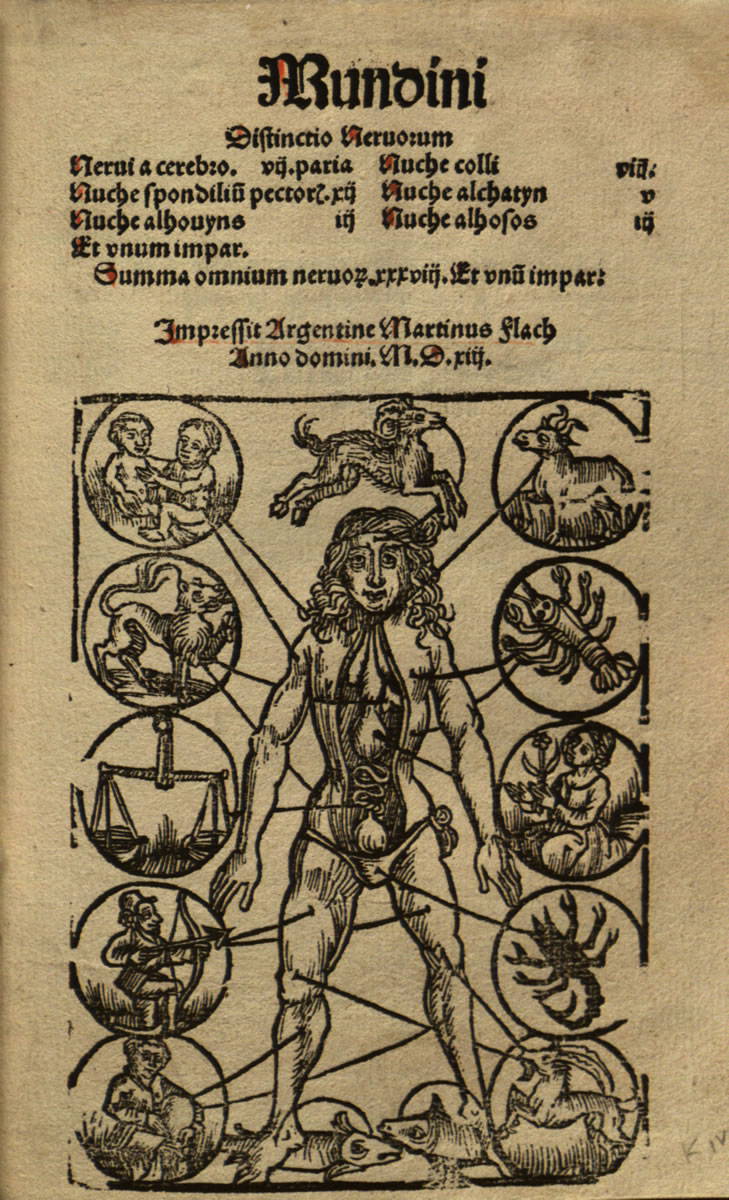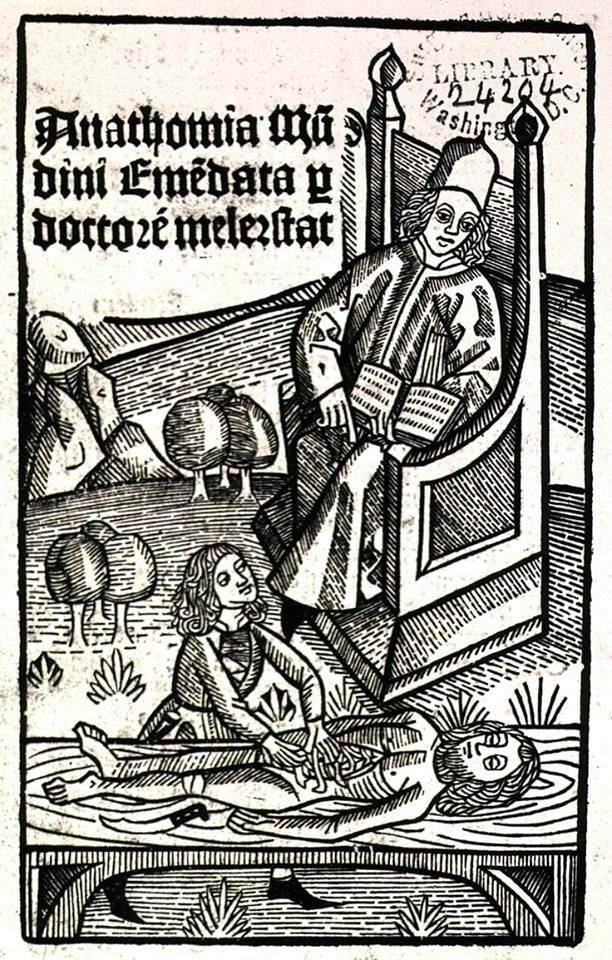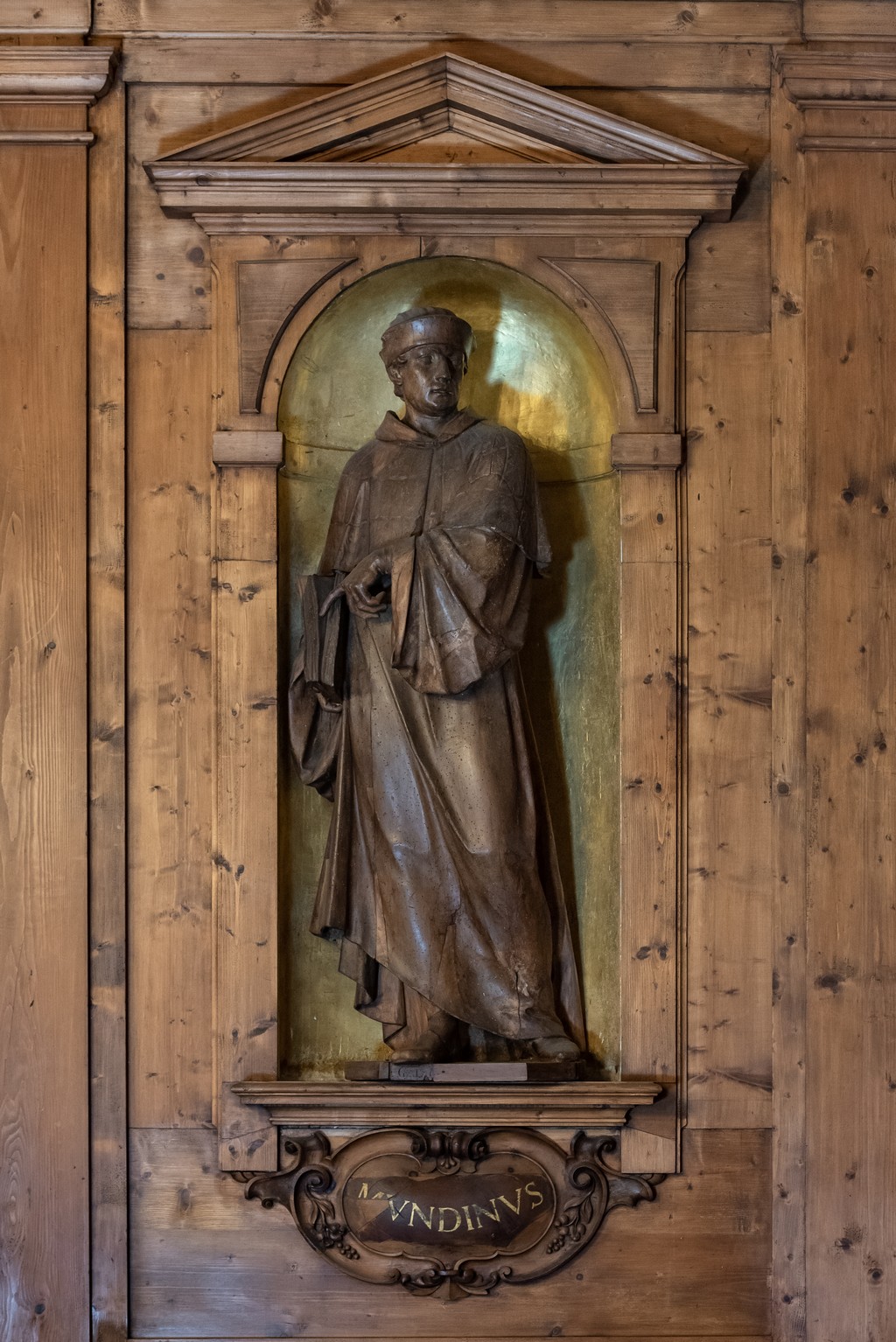Mondino Palazzo dell'Archiginnasio

Mondino Anathomia, 1541 3022668 Anatomy Wikipedia Medical
Art in Science: Mondino de' Liuzzi: The Restorer of Anatomy. Art in Science: Mondino de' Liuzzi: The Restorer of Anatomy. Art in Science: Mondino de' Liuzzi: The Restorer of Anatomy Clin Orthop Relat Res. 2017 Jul;475(7):1791-1795. doi: 10.1007/s11999-016-5213-5.

Liuzzi, Mondino de' Storia e Memoria di Bologna
Mondino de' Luzzi (1275-1326) Italian physician who marked the revival of medical practice in the West following the Dark Ages. Arabian and Persian doctors, the greatest of whom was Avicenna , had continued the Hippocratic and Galenic traditions, but their works remained in the framework of Greek medicine and did not produce new methodologies.

Liuzzo e Mondino de' Liuzzi Storia e Memoria di Bologna
Mondino De' Liuzzi Physician and anatomist, professor of medicine and philosophy (Bologna, c. 1275 - 1326). Mondino introduced the revolutionary practice of autopsy as part of the empirical teaching of medicine. This allowed the discipline to gradually free itself from the theories of the ancients, moving towards a modern conception of knowledge.

Dr Dave Gonsalvez on Mondino de Liuzzi The Laborastory
Mondino de Luzzi had 2 main achievements: In 1316, he wrote a book called Anathomia.His book was used to train and educate doctors about dissections until the 1500s. Mondino would supervise public dissections.

(PDF) Una fanciulla al tavolo di Mondino de Liuzzi?
anatomy. The name Mondino was probably an endearing form of Raimondo. The Luzzi family was prominent in Florence, but Mondino's lather, Nerino Frazoli de' Luzzi, and his uncle, Liuccio, had moved to Bologna by 1270, where Mondino was born about 1275.

Vesalius Early Years and the State of Medical Knowledge
Mondino de Luzzi, or de Liuzzi or de Lucci, [1] [2] ( c. 1270 - 1326), also known as Mundinus, was an Italian physician, anatomist and professor of surgery, who lived and worked in Bologna.

Mondino De Liuzzi primi passi della moderna anatomia Storia della
Mondino's Anothomia was written in Bologna around 1316. This book is the intellectual legacy of one of the fathers of human anatomy, and probably represents a collection of lessons given by the author at the Studium in Bologna. Mondino's Anothomia witnesses a profound renewal of the mode of understanding and teaching human anatomy through.

Mondino Palazzo dell'Archiginnasio
Mondini de' Liuzzi (c1270-1326), professor at the Bologna Medical School, supervised the first documented session of public dissection approved by the church, in January 1315. In 1316 the.

(PDF) Biografia DI Mondino De' Liuzzi Da Bologna Piero P
Mondino de' Liuzzi and his Anothomia: A milestone in the development of modern anatomy Enrico Crivellato, Corresponding Author.. Mondino's Anothomia was written in Bologna around 1316. This book is the intellectual legacy of one of the fathers of human anatomy, and probably represents a collection of lessons given by the author at the.

Pin on Exposición Leonardo
Mondino de Luzzi (also known as Mundini or Mundinus, Liuzzi, Lucci, Liucius, or even Lentiis and Leutiis) was an Italian physician, anatomist, and professor of surgery at the University of.

(PDF) Mondino de Luzzi a luminous figure in the darkness of the Middle
Mondino de Luzzi (also known as Mundini or Mundinus, Liuzzi, Lucci, Liucius, or even Lentiis and Leutiis) was an Italian physician, anatomist, and professor of surgery at the University of Bologna.

Estátua representando Mondino de Liuzzi. 4 Museo di Storia della
Generally accepted as the first true anatomical dissection manual since Galen's works in Ancient Greece, Mondino de Luzzi's Anathomia corporis humani, completed in 1316, became widely distributed after its printing in Padua in 1478.Distinguishing himself from previous scholars who declared the study of anatomy unnecessary, De Lucci opens his work stating that human beings are superior to.

Mondino de Liuzzi Alchetron, The Free Social Encyclopedia
Mondino de Luzzi (also known as Mundini or Mundinus, Liuzzi, Lucci, Liucius, or even Lentiis and Leutiis) was an Italian physician, anatomist, and professor of surgery at the University of Bologna.

Mundinus, the Italian anatomist, making his first dissection in the
Mondino de Luzzi, or de Liuzzi or de Lucci, ( c. 1270 - 1326), also known as Mundinus, was an Italian physician, anatomist and professor of surgery, who lived and worked in Bologna.

How to pronounce Mondino de Liuzzi (Italian/Italy)
Mondino de' Liuzzi, noto anche come Raimondino di nome, e de' Liucci, de' Luzzi o de' Lucci di cognome; detto Mundinus ( Bologna, 1275 - Bologna, 1326 ), è stato un anatomista italiano, universalmente considerato l'ideatore della moderna anatomia . Indice 1 Biografia 2 L'anatomia 3 Mundinus nell'arte e letteratura 4 Note 5 Bibliografia

Mondino_Dei_Luzzi_1541_Heart
Mondino de Luzzi (also known as Mundini or Mundinus, Liuzzi, Lucci, Liucius, or even Lentiis and Leutiis) was an Italian physician, anatomist, and professor of surgery at the University of Bologna ( Figure 1) ( 1 ).